Table of Contents
Have you ever wondered why clothing evolved from the natural world? Man has relied heavily on nature for his clothing needs since the human stone age. Products of man-made fibers, yarns, fabrics, and garments have only been a part of the industrial revolution.
Still in the present day where man-made or synthetic fabric is produced on a large scale. But the amount of natural fabrics have a far much greater volume of production than synthetic fabric. Let me share a short statics as below.
Cotton Yarn Production in India for year 2021-22 – 5.36 Mn KG
Man Made Fiber Production 2021-22 – 2.4 Mn. Tons
Only cotton is mentioned above; other natural fabric names include silk, linen, bamboo, jute, etc. It clearly demonstrates how connected man is to nature, and how nature has a huge abundance to meet man’s enormous demands..
I am Mohammed Ibrahim Anwar, a third-generation entrepreneur of a family-run fabric and apparel business. Since 1997, I have been front and center for this A. K. Ismail family enterprise. Since then, have been producing profitable and excellent clients.
If you wish to deepen your understanding and build a relationship with natural fabric. I’m willing to offer all of the information I’ve learned and the experience I’ve gained over the past three generations, as well as list all of the natural fabric names and their attributes.
There are two ways to define and perceive natural fabrics. The first one would be any fabric that has been taken directly off the loom or knitting machine. Whether it is made of yarn from natural or artificial sources. This is spoken in detail in our blog “Types of Fabrics with Name – Little Known Factors That Could texture your decisions.“
The second definition would apply to textiles created with natural fibers and yarns. In this definition, I would like to contribute what I have experienced.
This Segment is further divided into 2 branches and they would be as follows.
> Natural Fibres
> Regenerated Cellulose Fibers
Before going into greater detail about the attributes they have to offer, let me first describe the many natural fibers and regenerated cellulose fibers that are currently available.
> Natural Fibres
*Cotton
* Bamboo
* Silk
* Wool
* Jute
> Regenerated Cellulose Fibers
* Viscose
* Modal
* Tencel
Now that we have covered the basics, let’s talk about Natural Fabrics Names, their offerings, and potential applications. Cotton, which is included in the first branch of natural fibers, would be a good place to start.
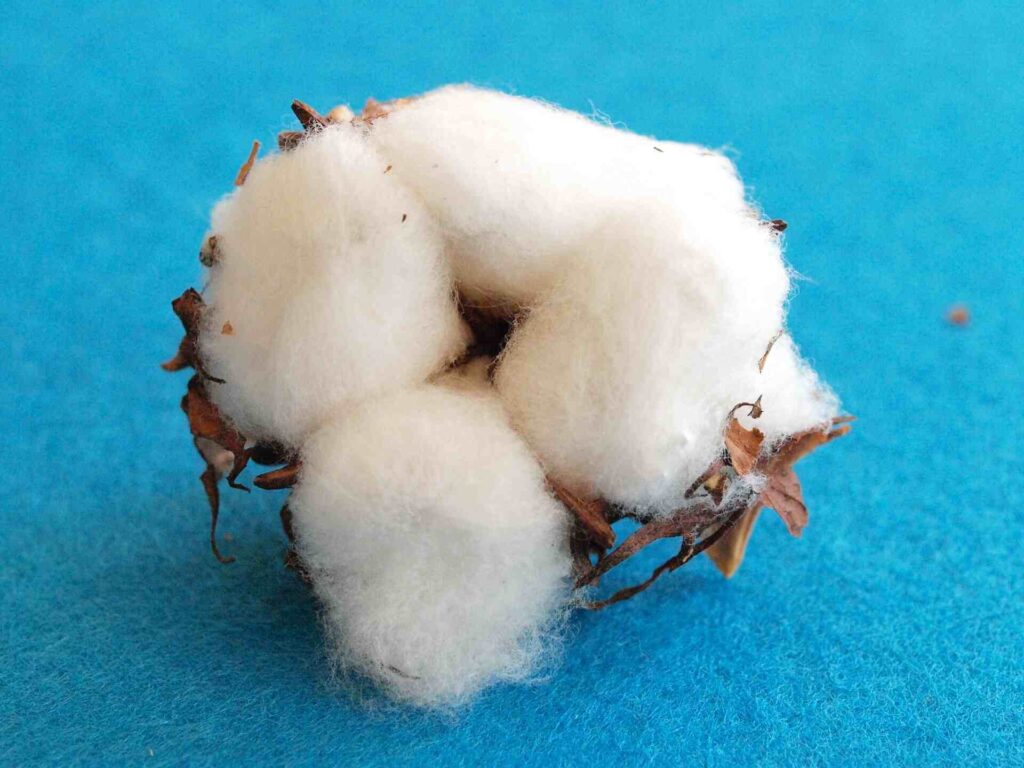
Cotton Cloth Information
The fluffy white cotton found in natural cotton seeds or cotton bolls is plucked by hand or by mechanization. This then progresses to the second phase of ginning, which separates the seeds from the fluffy, soft cotton. After that, it is transformed into yarn and fabrics.
Following are some elements of cotton that we mention.
* A material that is supple and crisp and is good at absorbing moisture. The reason I say both (Supple & Crisp) is because softer materials are produced when fabrics are created with finer counts of Yarn. The cloth would be crisper if it were constructed with coarse yarn.
* It is possible to dye and print. Due to the fiber’s exceptional dye compatibility.
* Wrinkles easily.
* Cotton is breathable because it is composed of the hollow material cellulose.
The terminology listed below is used in industry to describe the finished fabric created by mixing different counts of cotton yarn with various constructions and weave types. In this segment, we will be a briefing on the following.
* Cotton Muslin Cloth
* Cotton Twill or Cotton Drill
* Cotton Satin
* Cotton Canvas
Cotton Muslin Cloth.
In fact, studying “what is the meaning of muslin cloth?” is fascinating. Although it is essentially a plain weave fabric, plain weave fabric is made when one warp yarn rides over one weft yarn, and vice versa.
Throughout human history, muslin has been traded all across the world as a valuable item that was frequently worth the same as gold. But the muslin got its name because it was initially found in Mosul, Iraq, by European traders.
Muslin cloth is applied for a wide range of purposes in modern society. I could name a few types and applications for muslin cloth, but I’m sure there are more than what I’ve described.
* Cooking Muslin Cloth.
* Muslin Cloth for Baby.
* Muslin Cloth Sarees.
* Muslin Cloth for Filtering.
* Muslin Cloth Bags.
* Muslin Cloth Dress
The four broad categories of Muslin could be as follows.
1. Gauze.
2. Mull
3. Poplin
4. Voil
5. Sheeting.
Gauze Cloth Uses and their varieties.
Gauze cloth is a thin fabric. Usually loosely woven. Most of it is made of 100% cotton, and depending on the usage, it is bleached or kept unbleached. For a plush feel and excellent absorbency, it is often constructed of 100% cotton. The applications are detailed below.
1. Medical Bandages.
2. Lightweight carry bags.
3. Lightweight clothing generally for women.
4. Inner lining for clothes.
5. Additional support for bookbinding.
Mull Cloth
Mull cloth is a heaver fabric in comparison to gauze cloth. The usual yarn count used in Mull cloth is from 20’s to 40’s. Mull fabric is an economy segment fabric and is generally used in its bleached state. The uses of mull cloth are listed below.
1. Support fabric in home furnishing.
2. Basic covering purposes.
3. For Baby clothing and wrapping.
4. Loungewear for men and ladies.
Poplin Cloth
Poplin is the name for a more advanced variant that is dyed and printed and has a more sophisticated appearance and feel. Shirts and blouses for men, women, and children are typically made of Poplin.
Below is the market list of qualities available so it’s handy whenever you require it. The listed varieties are grey/natural fabric that is direct from the loom.
| Count | Reed x Pick | GSM | Variety |
| 30 x 30 | 48 x 48 | 84 | Mull |
| 30 x 30 | 56 x 44 | 87 | Mull |
| 25 x 25 | 48 x 48 | 100 | Mull |
| 40 x 40 | 92 x 80 | 112 | Poplin |
| 40 x 40 | 92 x 88 | 117 | Poplin |
| 30 x 30 | 68 x 68 | 118 | Poplin |
| 30 x 30 | 72 x 68 | 122 | Poplin |
| 40 x 40 | 124 x 64 | 123 | Poplin |
| 40 x 40 | 100 x 92 | 125 | Poplin |
| 40 x 40 | 124 x 72 | 128 | Poplin |
| 40 x 40 | 132 x 72 | 133 | Poplin |
| 20 x 20 | 52 x 52 | 136 | Mull |
| 30 x 30 | 92 x 64 | 136 | Poplin |
Voile Cloth Material.
Let me describe “what is voile cotton? “Voile cotton is constructed of fine count yarn and has a high reed and pick. The product has a silk-like feel and touch. It is soft, silky, and translucent to a certain extent. Voile uses yarn with a count ranging from 60’s to 100’s. Ladies’ sarees, baby wraps, and clothing are among the items made of voile. It is also used as a liner or support fabric for clothing. The following are the standard market characteristics for voile.
| Count | Reed x Pick | GSM | Variety |
| 60 x 60 | 132 x 108 | 104 | Voile |
| 60 x 60 | 132 x 104 | 102 | Voile |
| 60 x 60 | 132 x 100 | 100 | Voile |
| 60 x 60 | 92 x 88 | 78 | Voile |
| 60 x 60 | 90 x 104 | 84 | Voile |
| 80 x 80 | 82 x 80 | 53 | Voile |
| 80 x 80 | 92 x 88 | 59 | Voile |
| 100 x 100 | 92 x 104 | 51 | Voile |
Sheeting Fabric
This core fabric is composed of yarns in the 20s to 30s with a medium reed and pick density. Let me outline “what is cotton sheeting cloth used for?” As the name suggests, it is frequently used for bed sheets or other items that need to be covered. They could also be used for shirts for men or blouses for women. It is more versatile because it is produced using a wider width that is greater than 60″. The general market Sheeting fabric qualities are listed below.
| Count | Reed x Pick | GSM | Variety |
| 20 x 20 | 60 x 56 | 151 | Sheeting |
| 20 x 20 | 52 x 52 | 135 | Sheeting |
| 20 x 20 | 52 x 48 | 130 | Sheeting |
| 30 x 30 | 76 x 68 | 125 | Sheeting |
| 30 x 30 | 68 x 68 | 118 | Sheeting |
| 20 x 20 | 46 x 44 | 117 | Sheeting |
| 30 x 30 | 68 x 64 | 114 | Sheeting |
| 30 x 30 | 68 x 60 | 111 | Sheeting |
| 30 x 30 | 72 x 54 | 109 | Sheeting |
| 30 x 30 | 72 x 48 | 104 | Sheeting |
| 30 x 30 | 56 x 56 | 97 | Sheeting |
| 30 x 30 | 56 x 44 | 87 | Sheeting |
| 30 x 30 | 48 x 48 | 83 | Sheeting |
Cotton Twill or Cotton Drill.
Industrial phrases like “twill weave” and “drill weave” can be explained technically by observing that a twill weave is created when a weft yarn crosses over two warp threads. Similar to this, drill refers to when a weft yarn leaps over three warp yarns. As a result, the fabric’s face has the appearance of a diagonal, right-to-left cross line with ribs. This holds good for drill and twill weave. The tick mark method would be an easy way to document this. Another option is to picture the NIKE logo, which starts on the left and ends on the right.
Secondly, unlike the face side, which is more structured, the fabric’s backside would resemble a maze-like matrix. This weave is used to support dense reed and pick in a well-organized manner. Thus, Increasing the fabric’s life.
I have two detailed blogs on Twill Cotton. One explaining the science and durability of twill cotton. And the second uses of twill cotton and available market qualities. You may read these to get more information.
Listed below are the general market qualities of Drill and twill weave.
| Count | Reed x Pick | GSM | Variety |
| 07 x 07 | 68 x 38 | 394 | Drill |
| 16 x 12 | 108 x 56 | 305 | Drill |
| 10 x 10 | 68 x 38 | 276 | Drill |
| 16 x 12 | 96 x 48 | 267 | Drill |
| 16 x 10 | 88 x 32 | 240 | Drill |
| 20 x 16 | 108 x 56 | 237 | Drill |
| 20 x 20 | 108 x 56 | 213 | Drill |
| 25 x 20 | 108 x 54 | 187 | Drill |
| 20 x 20 | 96 x 44 | 182 | Drill |
| 25 x 20 | 108 x 48 | 180 | Drill |
| 16 x 20 | 88 x 36 | 179 | Drill |
| 30 x 30 | 132 x 72 | 177 | Twill |
| 30 x 30 | 124 x 64 | 163 | Twill |
| 30 x 30 | 124 x 60 | 159 | Twill |
| 30 x 30 | 120 x 56 | 152 | Twill |
| 40 x 40 | 132 x 100 | 151 | Twill |
| 50 x 50 | 164 x 104 | 139 | Twill |
| 30 x 30 | 84 x 72 | 135 | Twill |
| 40 x 40 | 132 x 72 | 133 | Twill |
| 50 x 50 | 132 x 100 | 121 | Twill |
| 50 x 50 | 132 x 72 | 106 | Twill |
| 80 x 80 | 138 x 108 | 80 | Twill |
Cotton Satin
Cotton Satin is a great silky finish fabric that has the sheen and softness of silk. It’s been woven in a particular way such that the sheen and softness are portrayed.
It is usually made in finer counts of yarn, which are commonly soft and supple. The attached photo shows that the weft yarn jumps over 3 warp yarns, and the dense reed pick gives the satin look. I guess the above explains “What is cotton satin fabric”
I have a detailed blog on the topic “What is Satin Cloth & Its Uses: A Comprehensive Guide to Types, Qualities, and Characteristics” You may check this for further insights.
If you would like to have a peek into the general market qualities of Satin and their GSM the below table shows it all.
| Count | Reed x Pick | GSM | Variety |
| 80 x 100 | 195 x 73/8 | 225 | Satin |
| 40 x 20 | 165 x 68 | 210 | Satin |
| 40 x 20 | 165 x 68 | 210 | Satin |
| 80 x 100 | 195 x 64/6 | 167 | Satin |
| 30 x 30 | 120 x 64 | 159 | Satin |
| 40 x 40 | 132 x 50/2 | 151 | Satin |
| 80 x 100 | 175 x 57/6 | 149 | Satin |
| 60 x 80 | 175 x 220 | 147 | Satin |
| 60 x 80 | 175 x 210 | 143 | Satin |
| 60 x 80 | 175 x 67/3 | 140 | Satin |
| 60 x 60 | 195 x 63/2 | 139 | Satin |
| 60 x 80 | 175 x 65/3 | 137 | Satin |
| 40 x 40 | 132 x 72 | 133 | Satin |
| 60 x 60 | 175 x 120 | 128 | Satin |
| 60 x 60 | 185 x 98/1 | 127 | Satin |
| 60 x 60 | 175 x 58/2 | 126 | Satin |
| 60 x 100 | 165 x 55/4 | 125 | Satin |
| 60 x 60 | 175 x 56/2 | 124 | Satin |
| 60 x 60 | 175 x 110 | 124 | Satin |
| 50 x 50 | 148 x 80 | 119 | Satin |
| 60 x 60 | 165 x 104 | 117 | Satin |
| 60 x 60 | 164 x 104 | 116 | Satin |
| 60 x 60 | 165 x 80 | 106 | Satin |
| 60 x 60 | 144 x 72 | 94 | Satin |
| 80 x 80 | 165 x 104 | 87 | Satin |
| 80 x 80 | 165 x 90 | 83 | Satin |
| 100 x 100 | 165 x 84 | 65 | Satin |
Cotton Canvas
Cotton Canvas is typically utilized in industrial applications since it is strong and thick. It is firmly woven from coarse yarn. It would be woven in a plain weave pattern. Duck is another name for canvas, which is also used for paintings, shoes, tents, and bags.
I have a detailed blog on the topic “A Comprehensive Guide on Types of Canvas Fabric, Its Uses, and Available Qualities” To get additional inputs this would be a good read.
The following are the general market qualities along with their GSM.
| Count | Reed x Pick | GSM | Variety |
| 07 x 07 | 68 x 38 | 394 | Plain |
| 10 x 06 | 76 x 28 | 348 | Duck |
| 10 x 10 | 68 x 38 | 275 | Plain |
| 16 x 08 | 84 x 28 | 243 | Duck |
| 12 x 10 | 56 x 48 | 238 | Plain |
| 11 x 8 | 44 x 40 | 230 | Plain |
| 11 x 11 | 44 x 46 | 213 | Plain |
| 16 x 12 | 84 x 26 | 204 | Duck |
| 10 x 10 | 40 x 36 | 198 | Plain |
| 12 x 16 | 56 x 48 | 193 | Plain |
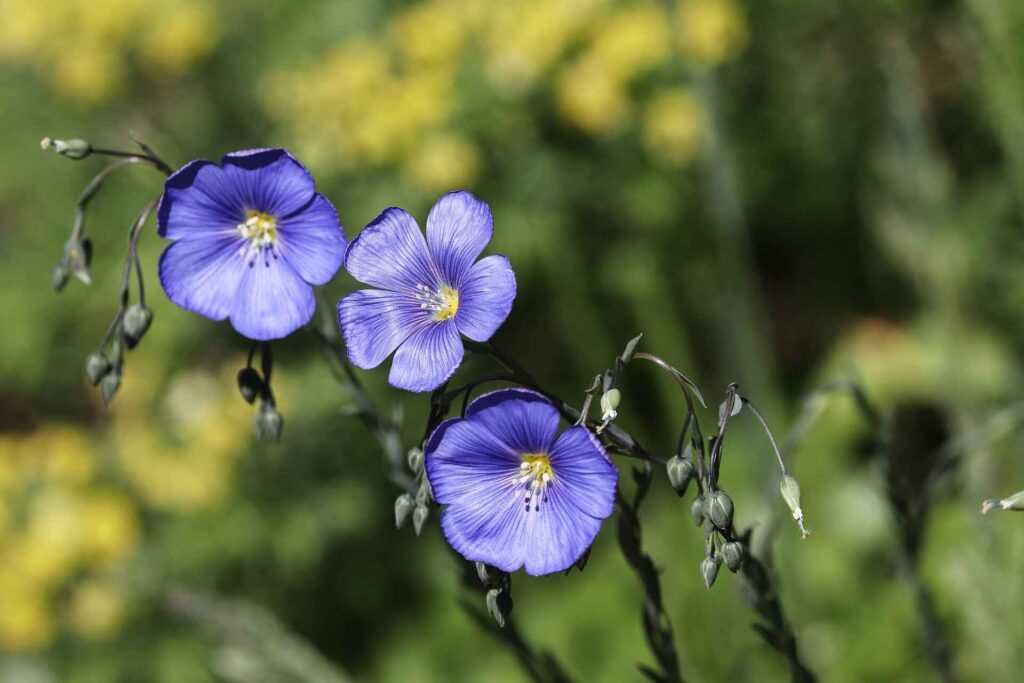
What is Linen Fabric
The fibers of the flax plant are used to create the fabric known as linen. A vast variety of garments and household goods have been made from this organic, sturdy, and long-lasting fabric for millennia. Given its reputation for being absorbent, linen is a fantastic fabric to use when the weather is warm. Additionally, it is incredibly breathable, allowing air to pass through and keeping the skin cool. In addition to apparel like dresses and suits, linen is frequently used to produce bed sheets, towels, and other household products.
The following steps are commonly involved in producing linen fabric:
1. Harvesting: Flax plants are cut down, and the stems are then used to make fiber. Either manually or mechanically.
2. Retting: To soften and remove the fibers from the woody core of the plant, the extracted flax fibers are then stored in water for several days.
3. Scutching: Any leftover plant matter and debris are subsequently removed by beating and combing the softened flax fibers.
4. Hackling: Using a device known as a hackle, the flax strands are then straightened and divided into several grades.
5. Spinning: Using a spinning wheel or spinning machine, the flax fibers are then spun into thread.
6. Weaving: Using a loom, the spun thread is then woven into fabric.
7. Finishing: To get rid of any last traces of impurities and give the woven linen cloth a smooth finish, it is then washed, dried, and pressed.
8. Inspection and packaging: The completed linen cloth is then examined for quality before being packed for sale.
A detailed blog on “What is linen cloth” is available and could be a good source of information.
Listed below are the commonly produced linen fabrics in the market.
| Count | Reed x Pick | GSM | Variety |
| 25 Lea x 25 Lea | 40 x 36 | 220 | Plain |
| 40 Lea x 40 Lea | 44 x 44 | 155 | Plain |
| 44 Lea x 44 Lea | 46 x 44 | 145 | Plain |
| 60 Lea x 60 Lea | 60 x 56 | 140 | Plain |
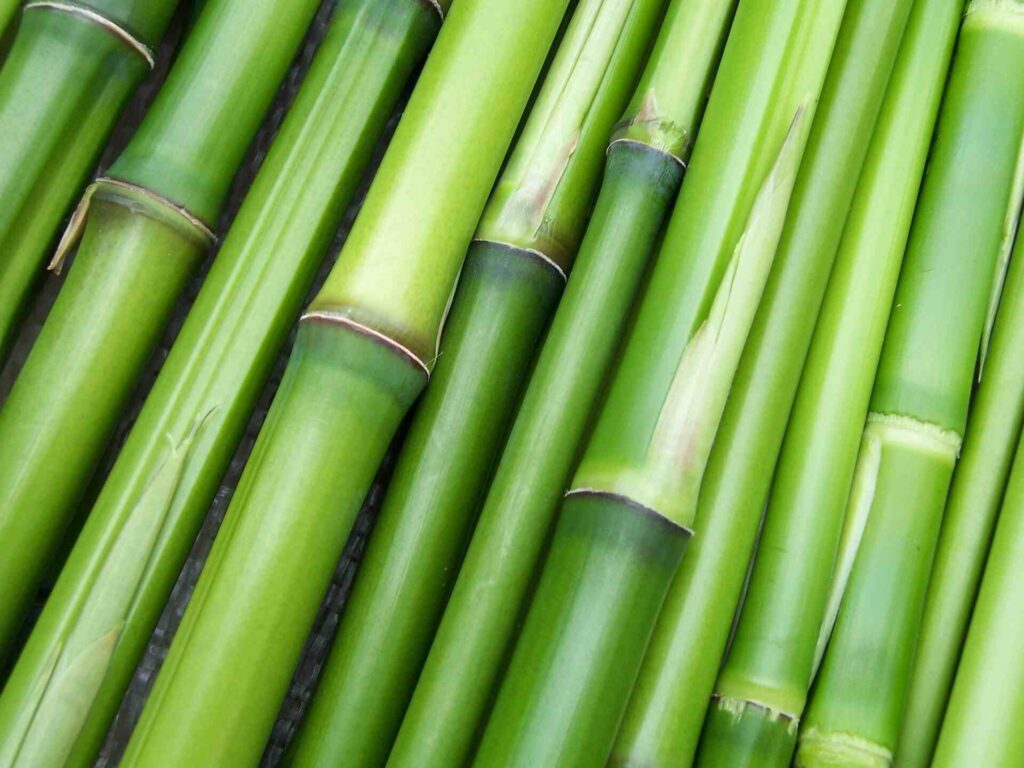
Bamboo Fabric India’s Product Line.
The market for green and sustainable products is always growing. And bamboo cloth products are best suited to be environmentally friendly and long-lasting. They are as silky as silk, hypoallergenic, and antimicrobial, which are all excellent qualities of natural fabrics.
An overview of bamboo and the production of bamboo fabric. Mr. Philipp Lichtenstadt obtained a patent for bamboo fiber in the United States in 1864. This fiber could be used to create garments and paper in the future. But it was unable to penetrate the market because of the high cost of manufacture and fierce competition from other fibers.
As technology advances and the market for organic and sustainable products grows. Since the beginning of 2000, a cost-effective process has been used to transform bamboo pulp into a fiber, yarn, and ultimately fabric and its goods.
The demand for the use of bamboo cloth has expanded significantly as of 2022. These are the standard market qualities that are accessible.
I have a detailed blog on Bamboo Fabric Uses. This would be a good read to get further information on Bamboo Fabric.
| Count | Reed x Pick | GSM | Variety |
| 20’s Bamboo x 20’s Bamboo | 60 x 56 | 151 | Plain Weave |
| 40’s Bamboo x 40’s Bamboo | 120 x 72 | 125 | Plain Weave |
| 60’s Bamboo x 60’s Bamboo | 175 x 56/2 | 124 | Satin Weave |
| 30’s Bamboo x 30’s Bamboo | 66 x 68 | 116 | Plain Weave |
| 40’s Bamboo x 40’s Bamboo | 80 x 60 | 91 | Plain Weave |
| 60’s Bamboo x 60’s Bamboo | 92 x 88 | 78 | Plain Weave |
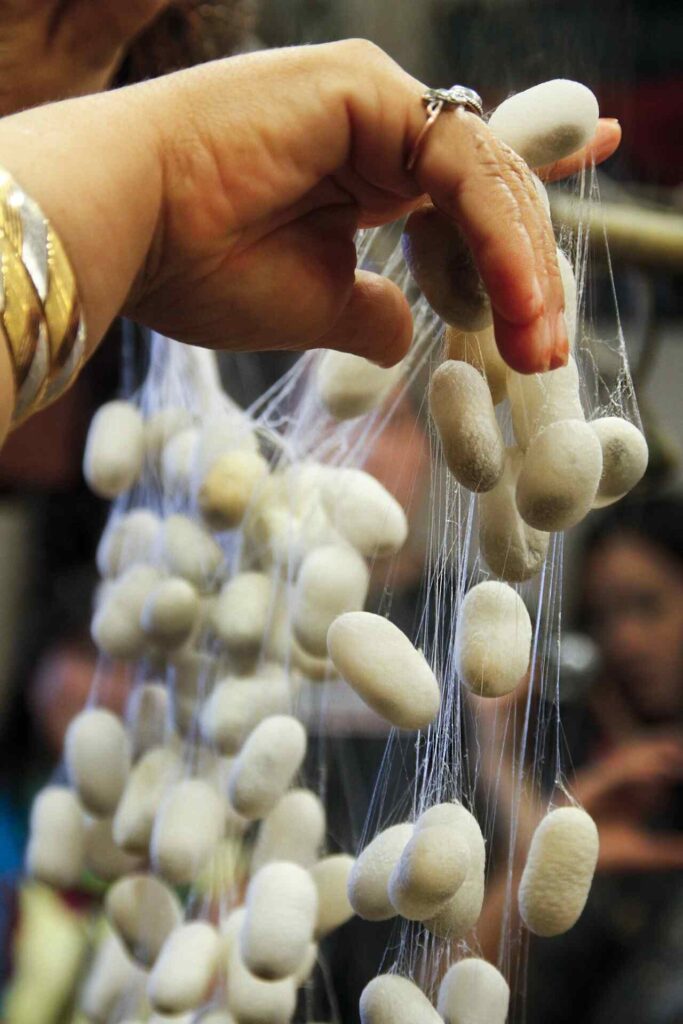
Silk
One of the world’s most opulent textiles is silk. Silkworms are the source of silk. The type of weaving and the species of silkworm used to produce the silk affect the silk’s properties. You can select the best silk for your needs by knowing the many sorts of silk.
A detailed write-up on Information about Silk Fabric is posted. You may check for further knowledge.
We have listed below the varieties of silk available in the market.
* Charmeuse
* Chiffon
* Crepe silk
* Habotai Silk
* Silk organza
* Dupioni Silk
* Silk Satin
* Silk Taffeta
* Silk Jersey
* Silk Cotton
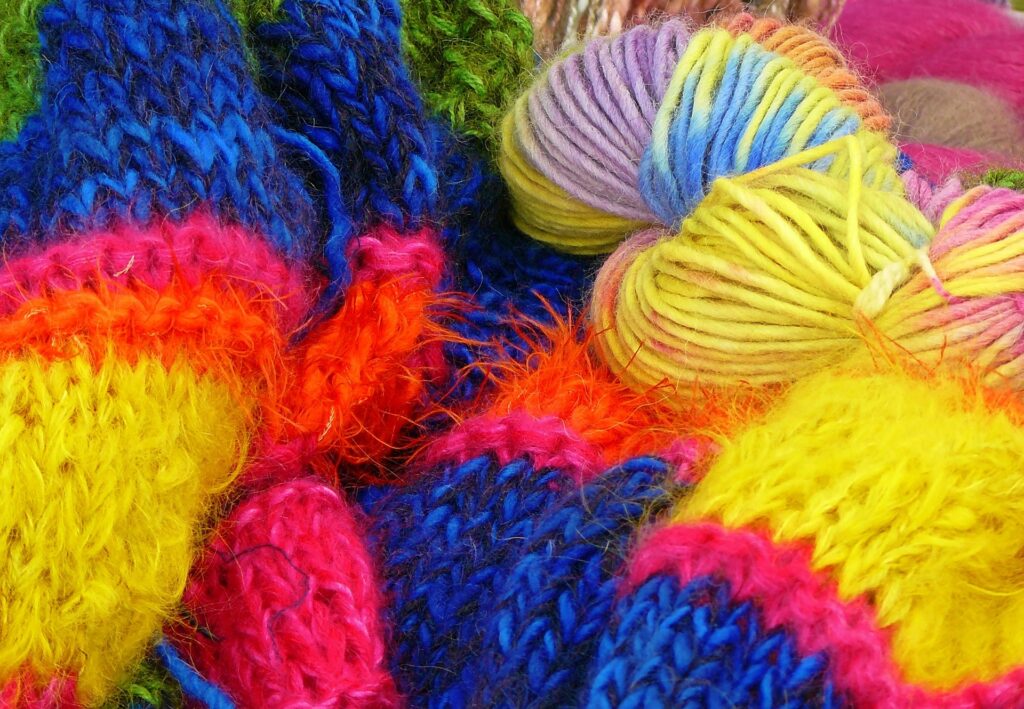
Information About Wool Fabric.
Wool is frequently referred to as tweed or cashmere. made with a variety of animal hair. produced widely in Australia. It is frequently used for carpets, firefighting apparel, warm clothes, and industrial insulation.
Sheep hair is most frequently connected with wool. And it’s generally true that sheep create the majority of the wool. Goats and camels are the other animals.
The production of wool is in the following stages.
1. Shearing of hair from wool-bearing animals.
2. Cleaning the hair and making it worthy of fibers of long strands.
3. These fibers are then spun into yarns.
4. These yarns are then carried on to the looms or knitting machines to convert into fabrics.
5. And finally these fabrics are converted into garments.
The following are general market qualities available.
1. Merino Wool.
2. Cashmere Wool
3. Mohair Wool
4. Alpaca Wool
5. Camel Wool
6. Virgin Wool or Goat Wool
A detailed blog on types of wool fabric. This would be a good read if you like to get more information on wool fabric.
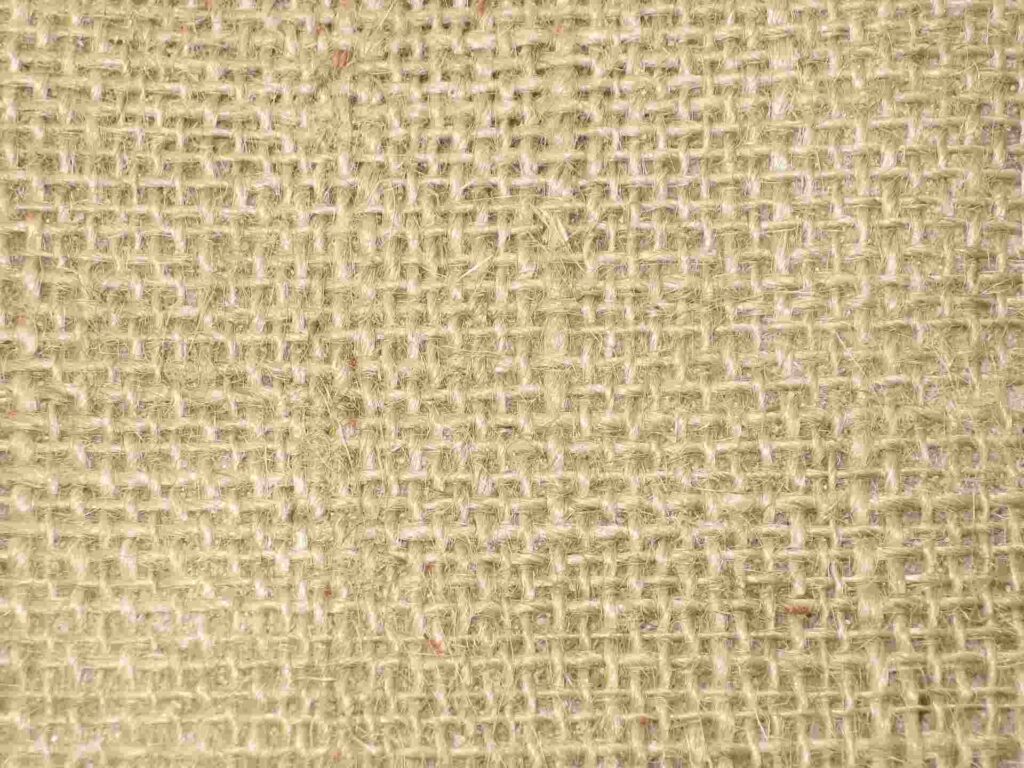
Jute Cloth Information
Jute is also known as Hessian or gunny cloth. Among the natural fabrics after cotton jute is the next highly produced natural cloth.
Jute fiber is derived from the jute plant. Which grows up to 10 ft in height. It is the longest natural fiber in the textile world.
The common properties of the jute would be as it is rugged and coarse and not suited for apparel
and clothing. It has a vast use in industries for packaging bales.
The other uses of jute could be bags, ropes, upholstery, carpet, and rugs.
The different varieties of Jute fabric are as follows.
1. White Jute.
2. Tossa Jute.
3. Mesta Jute.
A detailed write-up on the Uses of Jute is available on my blog topic “5 Surprising and Creative Uses of Jute You’ve Never Heard Of” It would be a great read to get to know more about Jute Fiber.
As we come to the end of the first branch of natural fabrics names. We shift to our next branch Regenerated cellulose Fibres.
Regenerated cellulose Fibres
Let’s dive in and understand what is regenerated cellulose fibers. As the textile and fabric industry is technology-oriented to service market demands. Having this in mind and forecasting alternative requirements of natural fabrics, regenerated cellulose fiber was introduced for the textile industry.
They have almost all the basic properties of natural fiber. All natural fibers are not worthy of being converted into fiber and yarn and finally into fabrics. Hence there are various chemicals that are used to bond this cellulose into the fiber which is then produced as fabric.
Let’s understand the various offerings of regenerated cellulose fiber.
Viscose Material Meaning
Viscose is made from wood pulp and a high concentration of chemicals. Viscose is an economical fabric and has a soft luxurious feel.
Viscose is breathable and absorbent to sweat and moisture being good for athletic wear. It maintains shape and does not fade easily. Below is a list of running qualities in viscose.
| Count | Reed x Pick | GSM | Variety |
| 30sf x 30sf | 92 x 64 | 131 | Plain |
| 2/40sf x 20sf | 56 x 44 | 128 | Plain |
| 30sf x 30sf | 68 x 60 | 105 | Plain |
| 40sf x 40sf | 92 x 72 | 103 | Plain |
| 30sf x 30sf | 68 x 48 | 98 | Plain |
| 30sf x 30sf HT | 56 x 44 | 85 | Plain |
A detailed blog on Viscose material meaning is available on the topic “Viscose Material Meaning Untraveled Journey into Magic that it Brings” where you would find an in-depth detail of Viscose.
Modal Cloth Type and their Properties.
This is an improved version of Viscose with additional properties of viscose. Modal is an echo-friendly fabric next best alternative to cotton.
Like cotton, modal fabric content too is made from cellulose which is obtained from beach trees.
The broad process involved in producing Modal fabric is as follows:
1. The beech tree’s wood crumbs are collected and treated with chemicals such that convert them into fibers.
2. These fibers are then converted into yarns of various counts as per the market requirements.
3. And finally the yarns are then woven or knitted.
Would like to give you a sleek preview of the running market qualities along with their GSM
| Count | Reed x Pick | GSM | Variety |
| 60 x 60 | 165 x 104 | 116 | Plain |
| 60 x 60 | 92 x 80 | 75 | Plain |
Tencel Fabric Meaning
Tencel fabric is botanic origin fabric. Where wood is sourced from the forest. And the main wood used is from the eucalyptus tree.
The eucalyptus tree is widely used because it grows fast and has high yields. Compared to cotton, eucalyptus provides as much as 5 times more fiber than cotton.
And secondly, eucalyptus has a high content of cellulose which is the main content of natural fiber for textiles. Which is why it’s the most preferred Tencel fabric.
Tencel is loved for the following properties and is listed below.
> Biodegradable
> Sustainable production.
> Enhanced breathability.
> Gentle on the Skin.
> Superior strength.
> Colour Retention.
FAQ
What is rayon made of?
A synthetic cloth created from cellulose fibers is called rayon. These fibers are made from wood pulp that has undergone chemical processing to produce a soft, absorbent fabric resembling those made of cotton or silk. Because of its smooth, opulent feel and capacity to absorb moisture, rayon is frequently used in garments, towels, and other textiles. Additionally, it is utilized in hygiene and medical products including bandages and sanitary pads.
Which fabric is soft and smooth?
Silk is a smooth, plush material. This is due to the fabric’s composition, which consists of the incredibly fine and glossy natural protein fibers of silkworms. In addition, silk strands are incredibly flexible, making it possible to weave them into a smooth, soft fabric.
What is the warmest fabric?
Wool is regarded as the warmest fabric because of its capacity to trap heat inside its fibers as a result of its inherent insulating qualities. It is a popular material for cold weather clothing since it can keep its warmth even when wet.
Which fabrics are known to be skin friendly why?
Cotton, silk, and bamboo are a few fabrics that are renowned to be gentle on the skin. Because they are gentle, breathable, and hypoallergenic, which means they are unlikely to aggravate infections or skin problems, these fabrics are regarded as skin-friendly. These materials also permit the skin to breathe and hold onto its own moisture, avoiding dryness and irritation.
What are Cambric fabric properties?
Lightweight, finely woven cotton fabric with a soft, plush feel is known as cambric. It has a high thread count, making it smooth and shiny, and is sturdy and long-lasting. Even after numerous washings, cambric fabric is renowned for its ability to keep its shape and color. It is favored for clothing, linens, and other household products since it is airy and effectively absorbs moisture. Additionally resistant to shrinking and wrinkles, cambric fabric is simple to clean and preserve.
What is the strongest natural fabric?
The strongest fabric found in nature is silk. This is due to the intrinsic crimp and flexibility of silk fibers, which enable them to stretch and return to their original shape without breaking. Conversely, cotton fibers are more likely to break under tension due to their smooth and straight structure.
What is Eco-Friendly fabric?
A fabric that has been created with a little negative impact on the environment as possible is called eco-friendly fabric. Using sustainable materials, consuming less energy and water during production, and limiting waste and chemical pollutants are a few examples of how to do this. Eco-friendly textiles are frequently created from organic cotton, bamboo, and linen, which are natural, biodegradable materials. They may also be recognized as organic by organizations like the Global Organic Textile Standard (GOTS).
What is the cheapest natural fiber?
Jute, a plant fiber derived from the stem of the jute plant, is most likely the least expensive natural fiber. Strong, long-lasting, and water-resistant are a few of its qualities. Making mats, ropes, and burlap bags are some frequent uses for it. Additionally, it is eco-friendly and biodegradable.
What is cotton sheeting fabric used for?
Cotton sheeting fabric is a type of fabric that is typically made from 100% cotton and is often used to make bed sheets, clothing, and other household items. The weave of cotton sheeting fabric is typically a plain weave, which means that the threads are woven over and under each other in a simple, criss-cross pattern. This type of fabric is usually woven, not knitted. Knitted fabrics are made by interlocking loops of yarn, while woven fabrics are made by interlacing threads at right angles to each other.


Pingback: What Is Muslin Cloth? Divine Secrets Of The Softest Fabric!
Pingback: Gauze Cloth Uses In Daily Life: 10 + Innovative Ideas
Pingback: Lifetime Study On Poplin Cloth For Embroidery And Other Uses
Pingback: Types Of Fabrics With Name– To Make Competitive Decisions.
Pingback: The Secret To How Fabric For Sheeting Are Graded By.
Pingback: Hospital Patient Gown For All Ages And All Treatment.
Pingback: Polyester Blend Fabric Your Guide To Common Blend Varieties
Pingback: Explore What Is Cotton Twill Fabric Used For & Its Qualities
Pingback: What Is Twill Cotton : Why It's So Durable And Long-Lasting